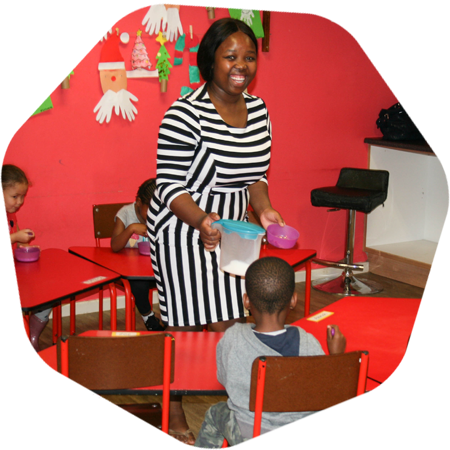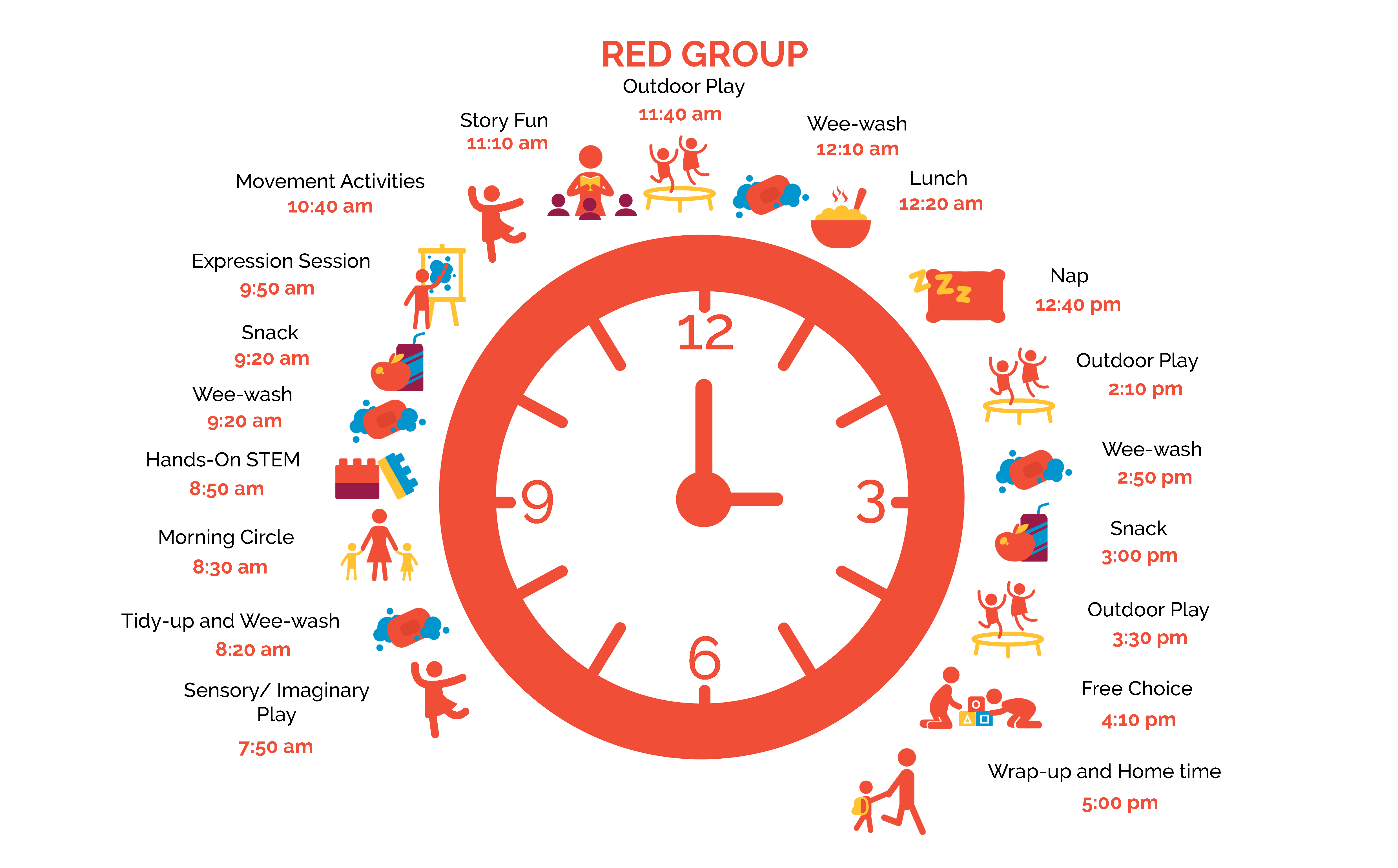
Red Group: Turning Four
Our Red Groupers are learning independence and functioning well within their daily routine, in this year they are sharpening their skills and learning to be cooperative and collaborative learners. Reinforcing friendships and growing emotionally.
Enrol my child now
Red Group Daily Routine:

Special supports for Red Group children and families:
- Developing logic and reasoning skills
- Getting ready for Grade-R
Development and Learning Objectives for the Red Group:
Language, Literacy and Creative Expression
Maths and Scientific Reasoning
Physical, Social and Emotional well-being
 Language, literacy and creative expression
Language, literacy and creative expression
Engages in music, art and dramatic play
1i “Creates own dance moves”
1j Begins to discern between fantasy and reality and engages in increasingly complex imaginary scenarios.
Receptive & Expressive vocabulary development
2j “Understands the unit related vocabulary in context”
Coherent expression of personal ideas, thoughts, feelings
3g. Successfully engages in meaningful multi-exchange conversations with peers and adults
Response to text
4e “Is able to describe events in a story and place them in sequence
“
Phonological Awareness
5f. Deletes phonemes (say “cat” without the ‘c’ / say a little bit of “running”), identifies common phonemes (do you hear the sound ‘all’ in always? ball? toy?)
Phoneme-Grapheme Correspondence
6b. Associates sounds with a particular mouth movement or gesture (e.g. ‘slithery snake’ for the ‘s’ sound)
Print awareness / concepts
7c. Engages in shared writing activities with adult support
7d. Understands that print runs from left to right and top to bottom on a page (concept of ‘directionality’)
Tracing, transcription and writing
8b. Accurately traces letters on paper / tablet screen
 Maths and Scientific Reasoning
Maths and Scientific Reasoning
Estimation
9a.Conceptually subitizes (quickly and accurately estimates the number of objects in a group) up to 3
Verbal and object counting
10d. Verbal and object counting
10e. Keeps one-to-one correspondence between counting words and objects (can answer a “how many?” question); “corresponder”
Reasoning
15. Classification and Patterning
16. Planning
17. Hypothesis Formation
Numeral recognition, depiction and quantity correspondence (cardinality)
11c. Numeral depiction from 1 to 10
11d. Numeral recognition from 10 to 20
Relative Magnitude and Measurement
12c. Indicates relative length of two objects (longer, shorter)
12d. Indicates relative magnitude of two quantities
Shape recognition and manipulation
13d. Manipulates shapes to form composite pictures such as houses and animals
Position, Direction, Orientation, and Time
14d. Creates a model or representation of the objects within a space
14e. Understands notion of past and can differentiate between yesterday and today
14f. Capable of responding to rough scheduling such as “come back and ask me again in ten minutes”
Classification and Repeat Patterning
15c. Groups objects based on independently identified characteristics (e.g. number of sides)
Planning
16c. Explains reasons for changes in plan during morning free choice activities or reflection during morning circle
Hypothesis formation
17d. Independently creates hypotheses for causes of observed phenomena
 pHysical and social emotional wellbeing
pHysical and social emotional wellbeing
Self-regulation
18i. Describes emotional and other consequences of negative behaviors and coping mechanisms for negative emotions
18j. Describes motivation behind own actions
Response to expectations
19f. Is capable of following a series of instructions related to a task
Positive sense of self
20c. Displays the beginnings of a sense of identity as a ‘situated self’ influenced by cultural, geographic and familial factors
Persistence in the face of challenges
21d. Takes initiative in seeking out new and challenging tasks and independently tries and number of approaches toward challenges before seeking support